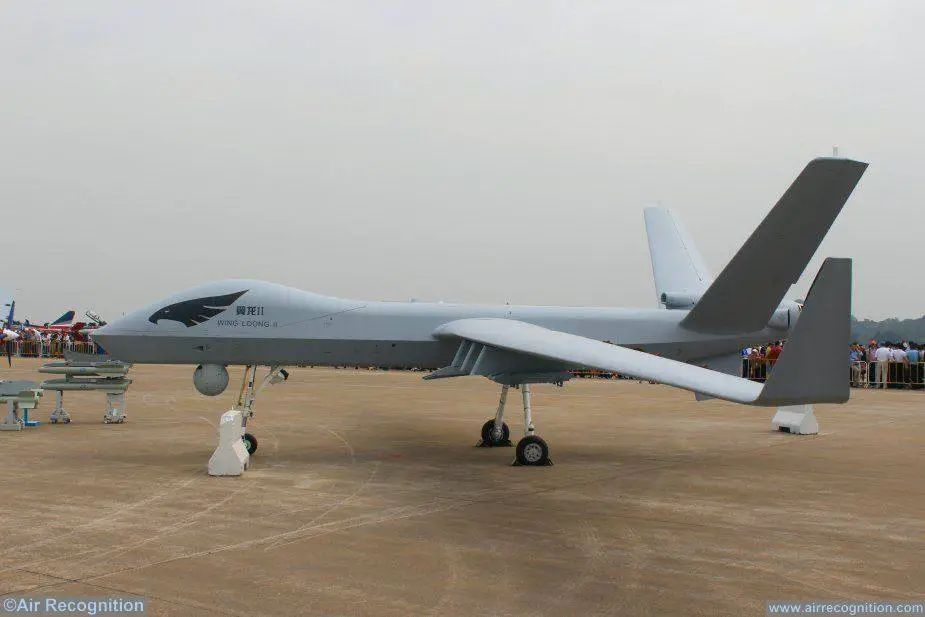A professor at the National Defense University of the People's Liberation Army (PLA) revealed on Thursday the first details of China's new armed reconnaissance drone following its debut at the Airshow China 2018 earlier this month. The GJ-2 is believed to enhance China's border patrol and counter-terrorism efforts.
 GJ-2 is the PLAAF name for the Wing Loong II MALE UAV
GJ-2 is the PLAAF name for the Wing Loong II MALE UAV
Made by the Chengdu Aircraft Design Institute under the Aviation Industry Corporation of China, the GJ-2 is a medium-to-high altitude armed unmanned reconnaissance aerial vehicle, Li Wei, a professor at the National Defense University, said in a report published on the China Youth Daily Thursday.
Installed with a turboprop engine, the aircraft can reach a top speed of 370 kilometers an hour at an altitude of 9,000 meters, and can stay in the air for 20 hours, the report said.
The GJ-2 has six weapon bays under its wings capable of carrying as many as 12 small missiles, making its strike capability better than its predecessor, the GJ-1, Li said in the report.
It is also equipped with a reconnaissance system, including a synthetic aperture radar and an electro-optical pod, which can provide more detailed information on the target, the report said.
Wei Dongxu, a Beijing-based military expert, told the Global Times on Thursday the GJ-2 is an enhanced version of a "bomb truck in the sky" that can also provide real-time information to field commanders.
The GJ-2 made its debut at the Airshow China 2018 in Zhuhai, South China's Guangdong Province earlier this month, although the PLA Air Force did not provide details then.
Media reports said the GJ-2 is the PLA version of the Wing Loong II, Chengdu Aircraft Design Institute's latest drone for export. Wei believes that the GJ-2 is more capable and reliable than the export version.
The PLA version will be better in terms of anti-jamming, battlefield communication and customization potential, Wei said.
China has a long border in high altitude areas like Southwest China's Tibet Autonomous Region, where patrols are risky and inefficient. The GJ-2 would solve the problem if deployed, the China Youth Daily report said.
It can also conduct counter-terrorism and stability maintenance missions, the report added.
Wei also compared the GJ-2 with US drone MQ-9 Reaper, stressing that while the two are similar in terms of armed reconnaissance, the Chinese drone uses lighter composite materials, allowing it to carry more ammunition.
















